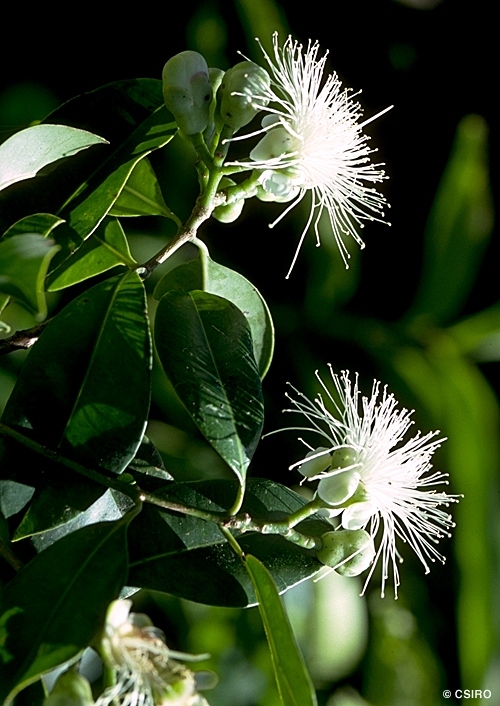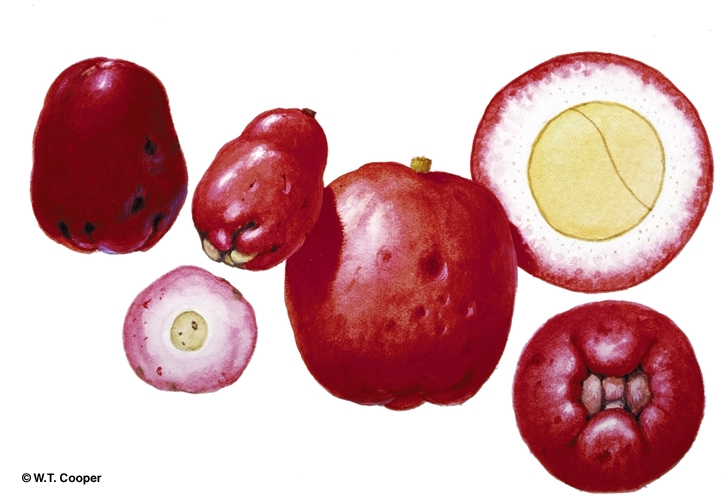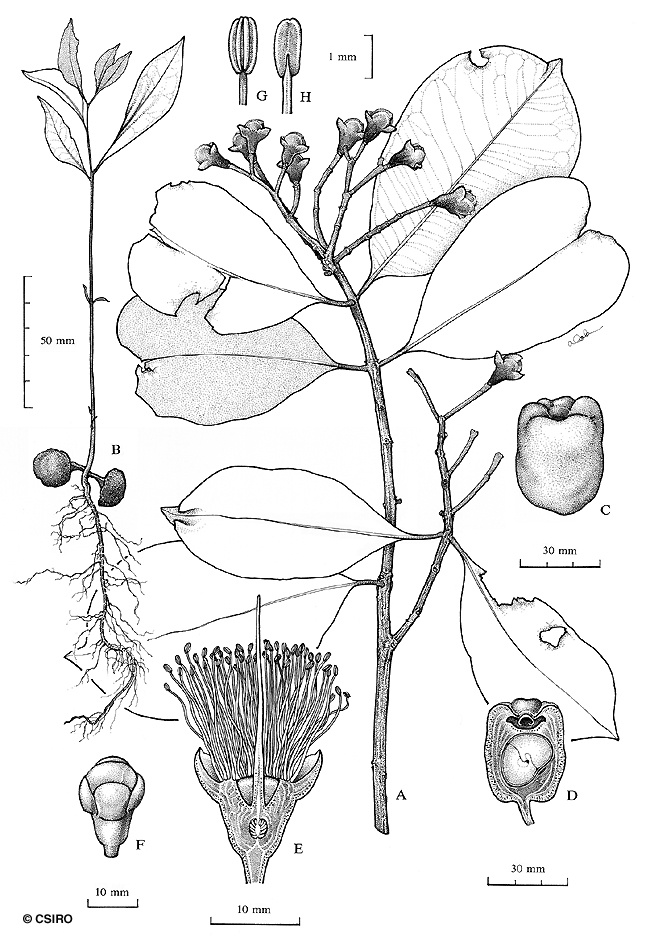Australian Tropical Rainforest Plants - Online edition
Syzygium alliiligneum B.Hyland









Hyland, B.P.M. (1983) Australian Journal of Botany Supplementary Series 9: 44. Type: B. Hyland 5923: Near National Park Reserve 904 at the lower end of the Palmerston Highway, 16.iii.1972 (holotypus QRS).
Puddenwood; Bark in the Wood; Mission Beach Satinash; Onionwood; Onionwood; Paper-barked Satinash; Onionwood Satinash; Pudden Satinash; Watergum; Rolypoly; Satinash, Mission Beach; Satinash, Paper-barked; Satinash, Pudden; Satinash, Onionwood
Bark pale, reddish or pinkish brown. Sections of bark included in the wood. A narrow, dark, almost black layer visible in the outer blaze.
Older twigs usually with papery bark. Leaf blades about 7.5-11.5 x 4-5.5 cm.
Bracts caducous, absent at anthesis. Calyx tube (hypanthium) campanulate at anthesis, shortly pedicellate, calyx tube (hypanthium) + pedicel about 9-17 mm long, tube (hypanthium) about 7-11 mm diam., calyx lobes +/- hemispherical, about 6-7 mm long. Petals spathulate, reflexed at anthesis, about 16 x 12 mm, oil dots numerous and conspicuous, more than 50 per petal. Outer staminal filaments about 18-25 mm long, glandular, anthers about 1.5 x 0.5 mm, gland absent or inconspicuous. Ovules about 20-30 per locule, placentas central, ovules radiating, ascending. Style about 30-40 mm long, approximating or exceeding the stamens.
Fruits globular to slightly cylindric, attaining about 40 x 35 mm, calyx lobes persistent, thick, fleshy, incurved, difficult to measure but large and conspicuous, about 10 mm or more across at the base. Pericarp firm and fleshy, containing numerous large oil glands particularly towards the epidermis. Seed to about 15-20 mm diam., testa adhering to the pericarp but easily separating from it and the uniformly textured cotyledons. Radicle basal or lateral, cotyledonary stipules present.
Fallen fruit eaten by Cassowaries. Cooper & Cooper (1994).
A tree that can attain a large size in rain forest conditions but perform well in open garden situations. Flowers are large and showy and are followed by large red fruits.
Wood specific gravity 0.75. Hyland (1983).





